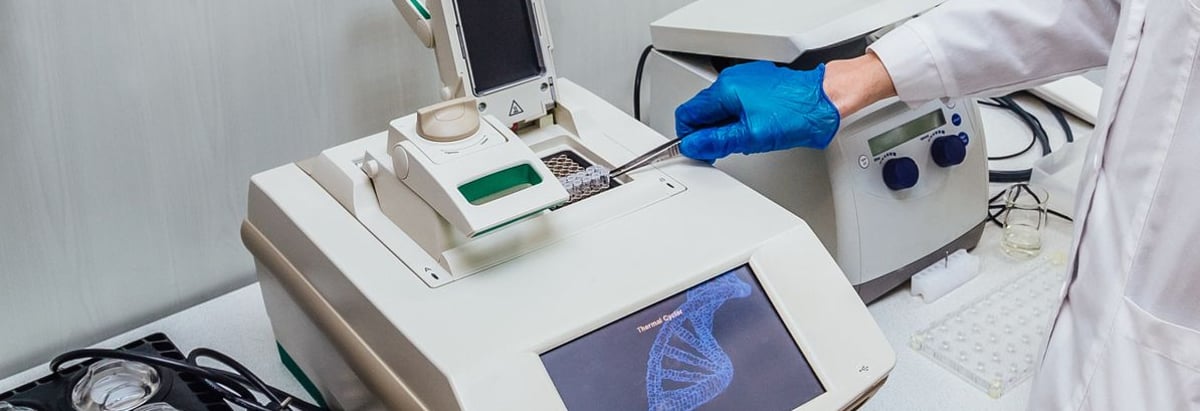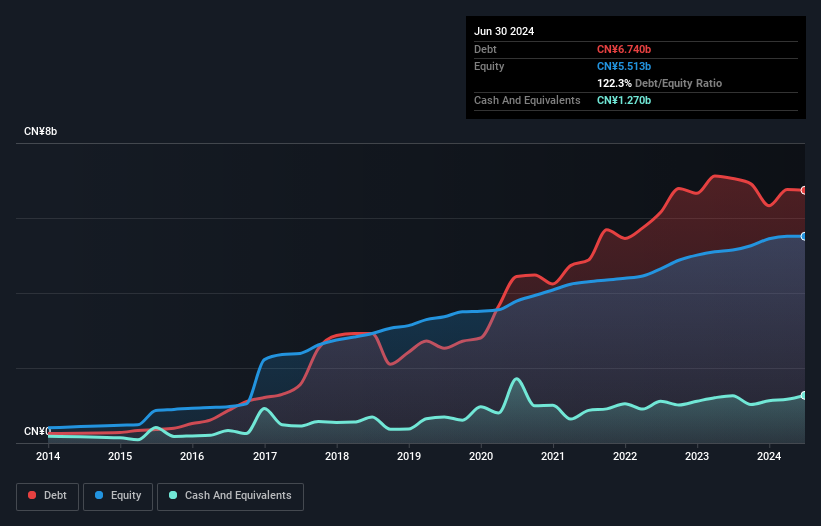- China
- /
- Life Sciences
- /
- SHSE:603108
These 4 Measures Indicate That Shanghai Runda Medical Technology (SHSE:603108) Is Using Debt Extensively

Howard Marks put it nicely when he said that, rather than worrying about share price volatility, 'The possibility of permanent loss is the risk I worry about... and every practical investor I know worries about.' It's only natural to consider a company's balance sheet when you examine how risky it is, since debt is often involved when a business collapses. Importantly, Shanghai Runda Medical Technology Co., Ltd. (SHSE:603108) does carry debt. But is this debt a concern to shareholders?
Why Does Debt Bring Risk?
Generally speaking, debt only becomes a real problem when a company can't easily pay it off, either by raising capital or with its own cash flow. Part and parcel of capitalism is the process of 'creative destruction' where failed businesses are mercilessly liquidated by their bankers. However, a more common (but still painful) scenario is that it has to raise new equity capital at a low price, thus permanently diluting shareholders. Having said that, the most common situation is where a company manages its debt reasonably well - and to its own advantage. The first step when considering a company's debt levels is to consider its cash and debt together.
View our latest analysis for Shanghai Runda Medical Technology
What Is Shanghai Runda Medical Technology's Net Debt?
You can click the graphic below for the historical numbers, but it shows that Shanghai Runda Medical Technology had CN¥6.74b of debt in June 2024, down from CN¥7.05b, one year before. However, it also had CN¥1.27b in cash, and so its net debt is CN¥5.47b.

A Look At Shanghai Runda Medical Technology's Liabilities
Zooming in on the latest balance sheet data, we can see that Shanghai Runda Medical Technology had liabilities of CN¥7.90b due within 12 months and liabilities of CN¥1.08b due beyond that. On the other hand, it had cash of CN¥1.27b and CN¥5.87b worth of receivables due within a year. So its liabilities total CN¥1.84b more than the combination of its cash and short-term receivables.
Of course, Shanghai Runda Medical Technology has a market capitalization of CN¥10.8b, so these liabilities are probably manageable. But there are sufficient liabilities that we would certainly recommend shareholders continue to monitor the balance sheet, going forward.
In order to size up a company's debt relative to its earnings, we calculate its net debt divided by its earnings before interest, tax, depreciation, and amortization (EBITDA) and its earnings before interest and tax (EBIT) divided by its interest expense (its interest cover). This way, we consider both the absolute quantum of the debt, as well as the interest rates paid on it.
While Shanghai Runda Medical Technology's debt to EBITDA ratio of 6.0 suggests a heavy debt load, its interest coverage of 8.6 implies it services that debt with ease. Our best guess is that the company does indeed have significant debt obligations. Shareholders should be aware that Shanghai Runda Medical Technology's EBIT was down 37% last year. If that earnings trend continues then paying off its debt will be about as easy as herding cats on to a roller coaster. The balance sheet is clearly the area to focus on when you are analysing debt. But ultimately the future profitability of the business will decide if Shanghai Runda Medical Technology can strengthen its balance sheet over time. So if you're focused on the future you can check out this free report showing analyst profit forecasts.
Finally, a business needs free cash flow to pay off debt; accounting profits just don't cut it. So we always check how much of that EBIT is translated into free cash flow. Over the last three years, Shanghai Runda Medical Technology recorded negative free cash flow, in total. Debt is far more risky for companies with unreliable free cash flow, so shareholders should be hoping that the past expenditure will produce free cash flow in the future.
Our View
On the face of it, Shanghai Runda Medical Technology's net debt to EBITDA left us tentative about the stock, and its EBIT growth rate was no more enticing than the one empty restaurant on the busiest night of the year. But on the bright side, its interest cover is a good sign, and makes us more optimistic. Looking at the bigger picture, it seems clear to us that Shanghai Runda Medical Technology's use of debt is creating risks for the company. If everything goes well that may pay off but the downside of this debt is a greater risk of permanent losses. There's no doubt that we learn most about debt from the balance sheet. However, not all investment risk resides within the balance sheet - far from it. For example, we've discovered 3 warning signs for Shanghai Runda Medical Technology (1 makes us a bit uncomfortable!) that you should be aware of before investing here.
If you're interested in investing in businesses that can grow profits without the burden of debt, then check out this free list of growing businesses that have net cash on the balance sheet.
If you're looking to trade Shanghai Runda Medical Technology, open an account with the lowest-cost platform trusted by professionals, Interactive Brokers.
With clients in over 200 countries and territories, and access to 160 markets, IBKR lets you trade stocks, options, futures, forex, bonds and funds from a single integrated account.
Enjoy no hidden fees, no account minimums, and FX conversion rates as low as 0.03%, far better than what most brokers offer.
Sponsored ContentNew: Manage All Your Stock Portfolios in One Place
We've created the ultimate portfolio companion for stock investors, and it's free.
• Connect an unlimited number of Portfolios and see your total in one currency
• Be alerted to new Warning Signs or Risks via email or mobile
• Track the Fair Value of your stocks
Have feedback on this article? Concerned about the content? Get in touch with us directly. Alternatively, email editorial-team (at) simplywallst.com.
This article by Simply Wall St is general in nature. We provide commentary based on historical data and analyst forecasts only using an unbiased methodology and our articles are not intended to be financial advice. It does not constitute a recommendation to buy or sell any stock, and does not take account of your objectives, or your financial situation. We aim to bring you long-term focused analysis driven by fundamental data. Note that our analysis may not factor in the latest price-sensitive company announcements or qualitative material. Simply Wall St has no position in any stocks mentioned.
About SHSE:603108
Shanghai Runda Medical Technology
Shanghai Runda Medical Technology Co., Ltd.
Reasonable growth potential and fair value.
Market Insights
Community Narratives



